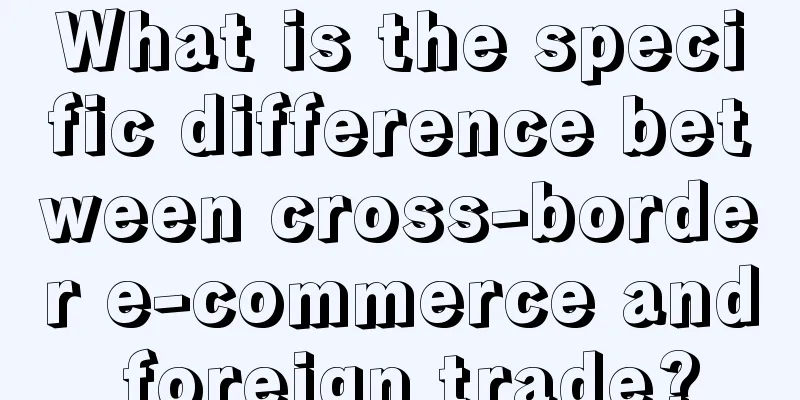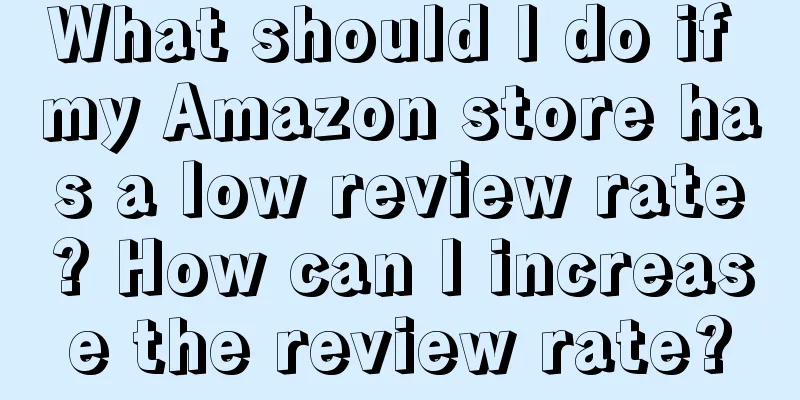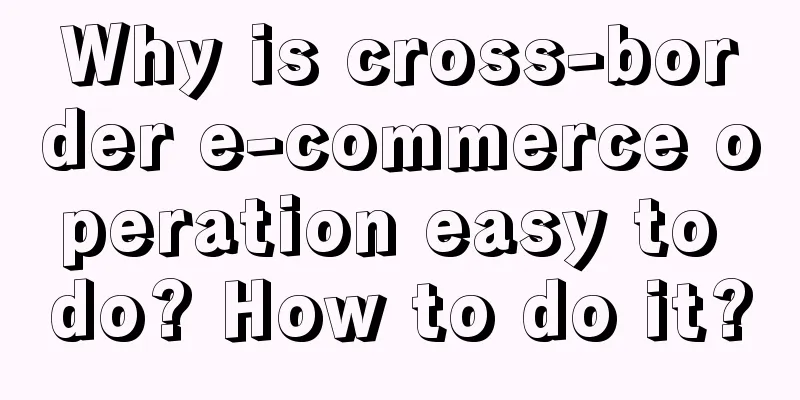What is the specific difference between cross-border e-commerce and foreign trade?

|
Now, whether it is cross-border e-commerce or foreign trade, there are differences. You need to distinguish them, but many people find it difficult to distinguish between cross-border e-commerce and foreign trade. What is the specific difference between cross-border e-commerce and foreign trade? The following is an introduction for everyone. 1. Different subject directions: In the foreign trade market, companies expand overseas markets by promoting their products and services through information channels and attracting foreign merchants. Therefore, from the perspective of communication methods, foreign trade belongs to information flow. On cross-border platforms, merchants directly publish product information through platforms or self-built websites in order to complete product transactions. From this perspective, cross-border e-commerce is about product flow. 2. Different import and export links: In the foreign trade market, since bulk commodities are involved, companies do not obviously consider optimizing time and costs in the import and export links. In cross-border e-commerce, both the time and cost of transportation will affect the final transaction and profit of the goods. Therefore, merchants must pay attention to these links, try to reduce costs and improve efficiency as much as possible. 3. Online transactions and offline transactions have different transaction methods: In foreign trade, the transaction method between two parties is mostly offline, or the transaction is not conducted through a third-party payment platform. In cross-border e-commerce, the transaction parties and transaction methods are generated by the platform, and payment also requires the intervention of a third-party payment platform. 4. Different taxes: Because foreign trade often involves large-scale transactions, customs review and tax declaration are relatively complicated, involving not only value-added tax but also consumption tax. As a transaction method in which merchants face individuals, cross-border e-commerce is simpler in terms of taxation. Sometimes you may only be involved in a travel tax. 5. Different business models: The basic model of foreign trade is B2B, which is a product of the early stage of global trade development. The mainstream trade model of cross-border e-commerce is B2C, which is the inevitable result of the development of global trade. Cross-border e-commerce has broken the operation model of traditional foreign trade e-commerce, but now the boundary between cross-border e-commerce and foreign trade is becoming more and more blurred. After reading the above introduction, you should know the specific difference between cross-border e-commerce and foreign trade. In fact, cross-border e-commerce is a combination of e-commerce and foreign trade, but cross-border e-commerce directly develops consumers and is a terminal among terminals. Recommended reading: How to do cross-border e-commerce for novices? What aspects need to be done well? What are the independent cross-border e-commerce sites? Introduction to the four major sites What does a cross-border e-commerce independent website mean? What are the advantages? |
<<: Can I win a lawsuit for Shopee refund? How to reduce the refund return rate?
Recommend
The 6 most popular hot topics in Xiaohongshu’s health track
On the Xiaohongshu platform, health and wellness c...
Douyin e-commerce launched its own "Taobao" clone
This article deeply discusses the strategic layout...
Can Shopee only deliver to one official warehouse? What are the delivery steps?
Can Shopee only deliver to one official warehouse?...
What kind of platform is Foreign Trade Soho? How can individuals receive foreign trade orders?
Foreign trade SOHO, or the way a small home office...
From scale profit to service profit, the logic of hotel business has really changed
The hotel industry is shifting from "waiting ...
Do companies still need to conduct media opinion risk checks before March 15?
Every year, March 15 is a disaster for brands. Do ...
Why does Wish not place orders when the traffic is very high? How can I place orders quickly?
Traffic is very important for a store. If a store ...
2024 is the big year for sports events. Rethink sports marketing from these five trends
This article mainly discusses the five trends in 2...
How does Amazon use big data? How is it specifically reflected?
The reason why Amazon is so powerful is that the b...
Will Amazon's store be closed immediately after being linked? Analysis of the reasons why Amazon closed the store
There are many rules on the Amazon platform that a...
The number of followers increased by 4 million in 7 days. Who created “Wa Ya Wa”?
"Dig and dig in the little garden, plant litt...
Case: How to double the sales of health products with 700,000 private fans!
At a time when private domain traffic operations h...
4 product selection methods, tell you how to choose good products!
To judge whether a project is successful, product ...
The decisive battle for women's clothing return rate, how to reduce the return rate by 20% through full-link optimization, 10,000 words of practical experience (Part 1)
When doing e-commerce, we are often troubled by th...
Tourism changes: from outbound to county-level, no more high-end games
With the end of the 2024 May Day holiday, the tour...
![[Revealing] How do top bosses attract fans with their personal stories?](/upload/images/67e6eadce65bf.webp)








